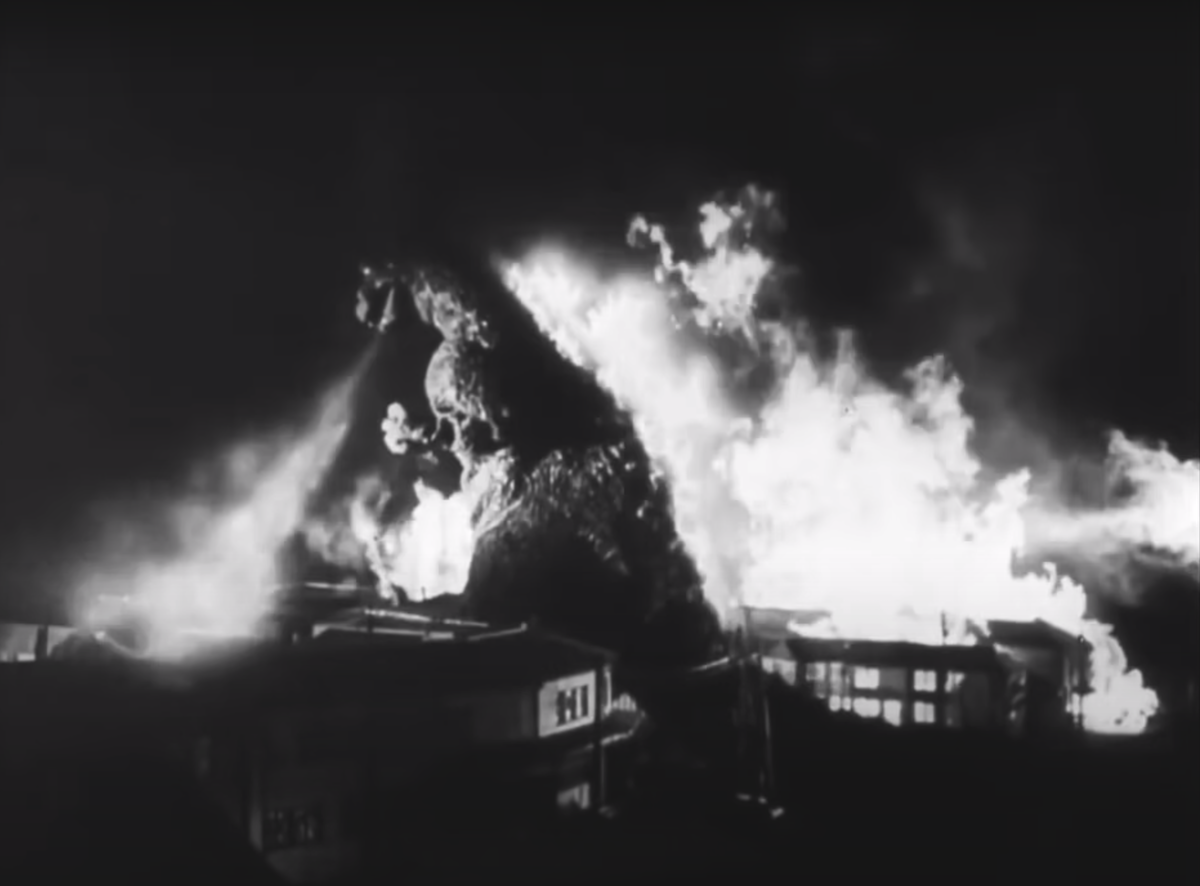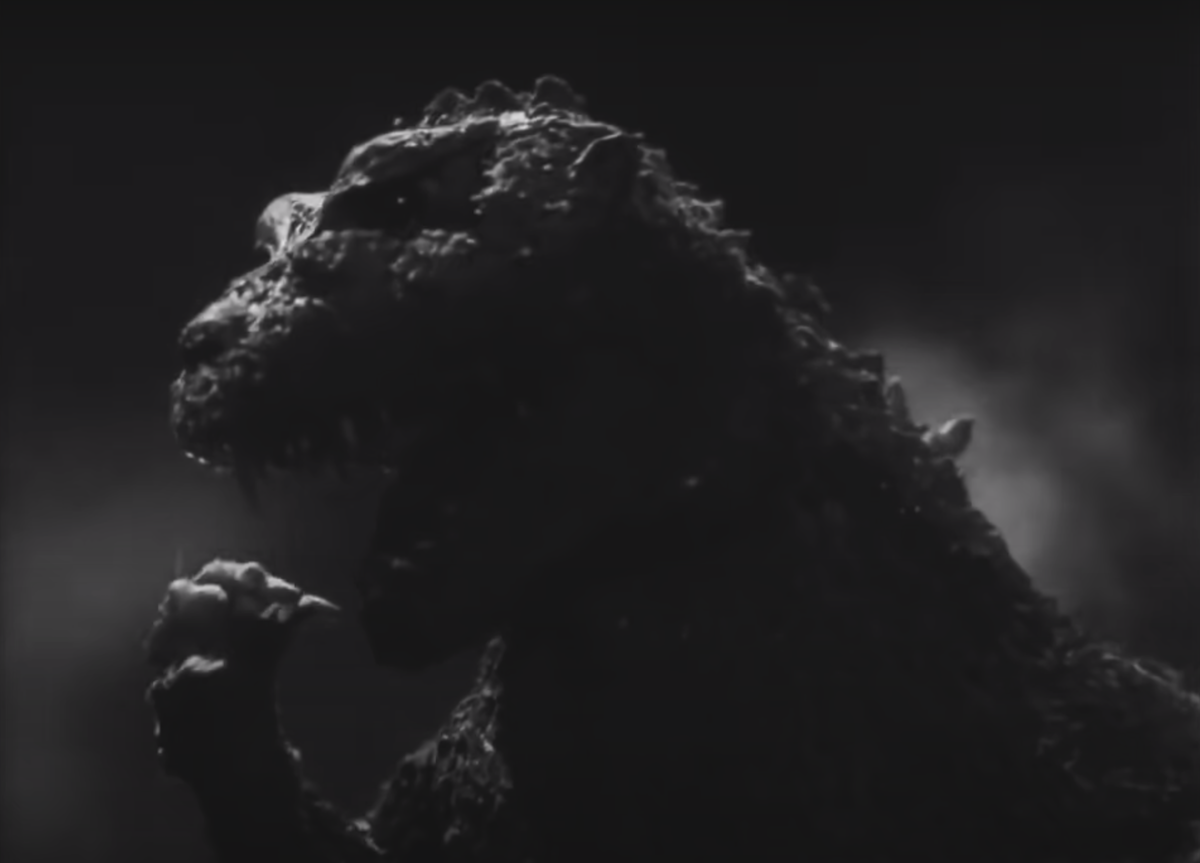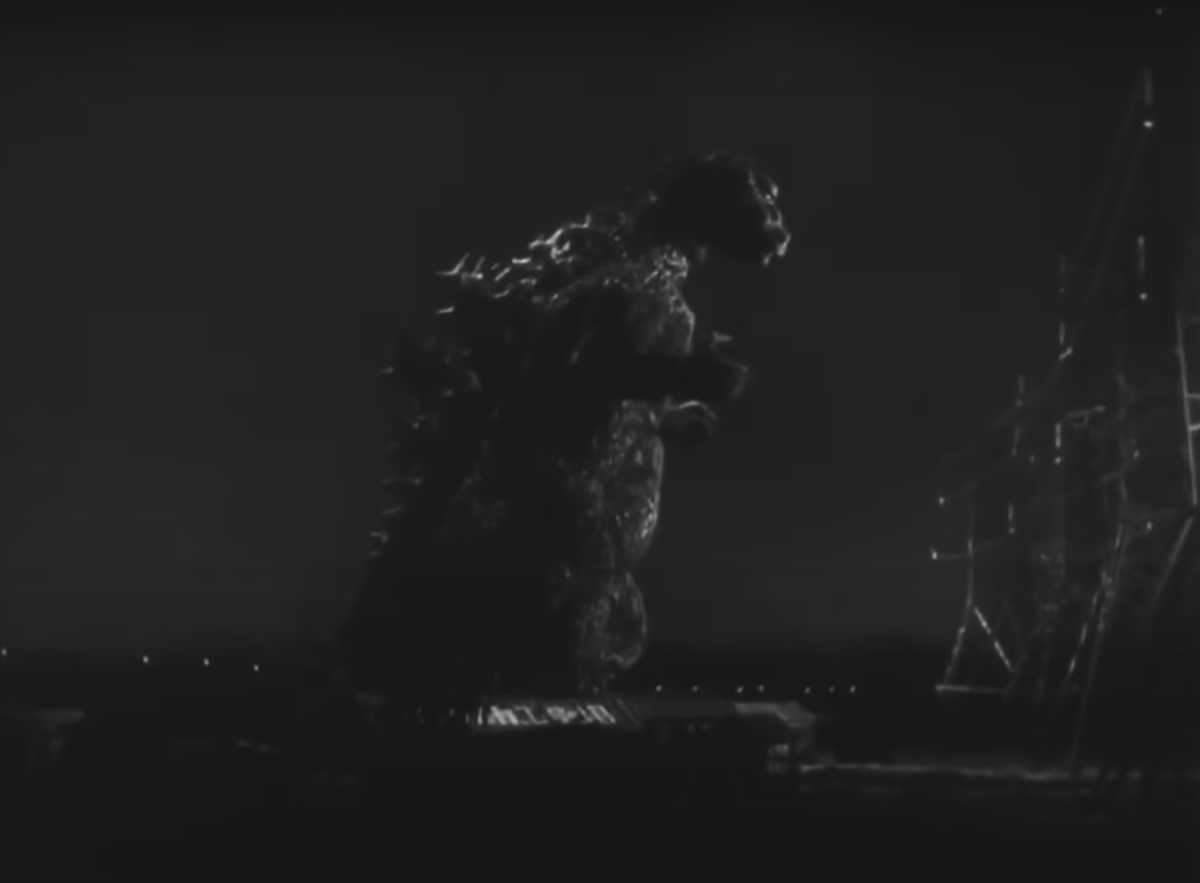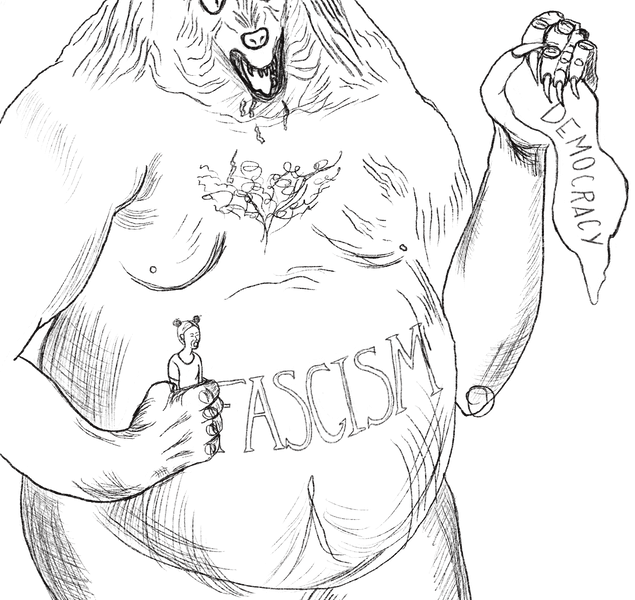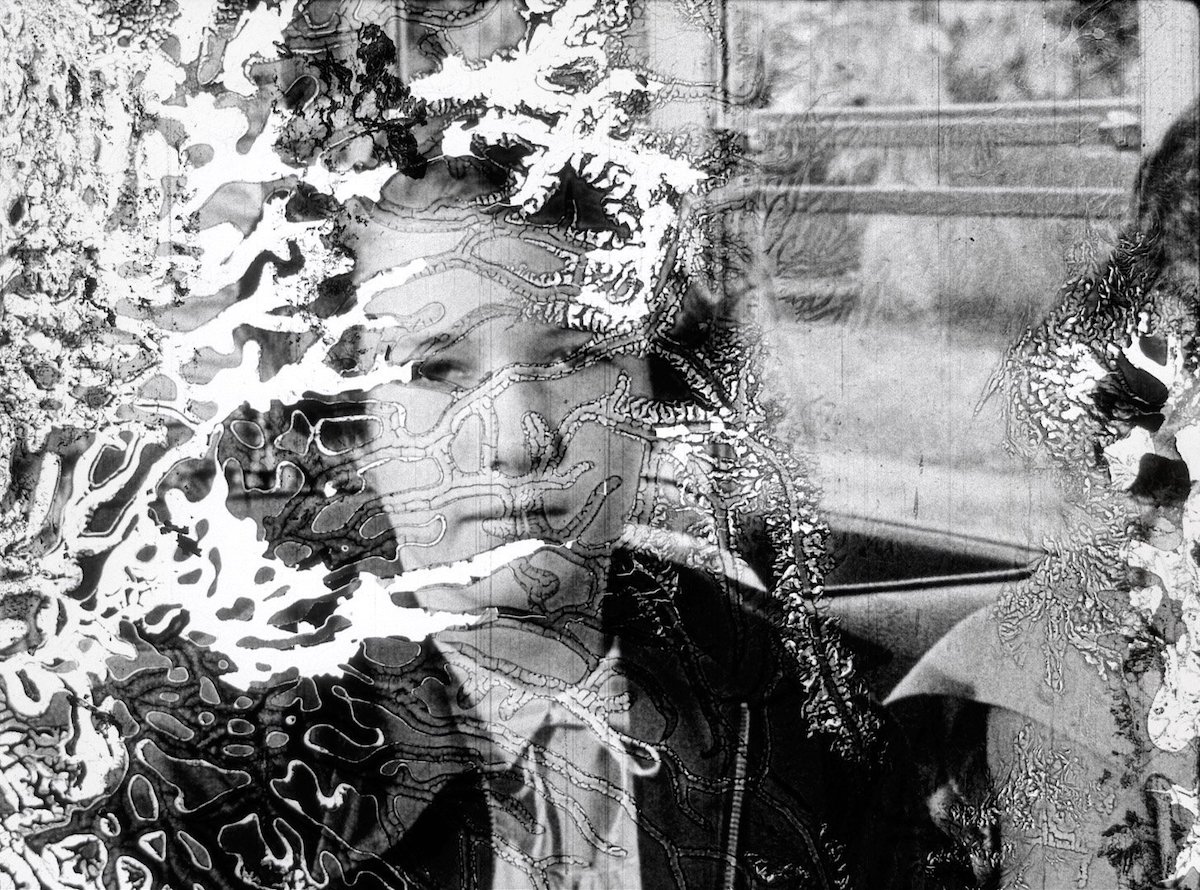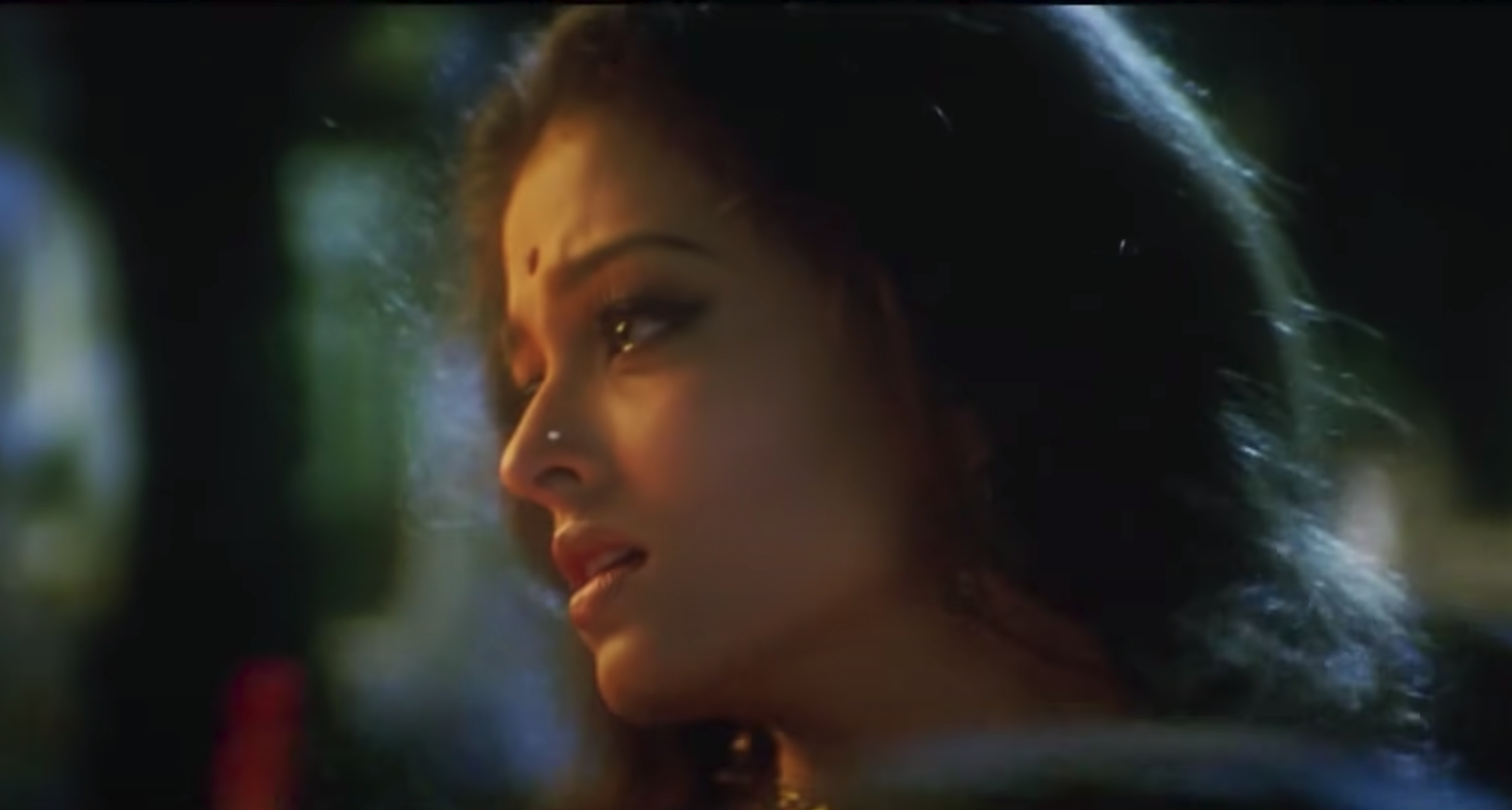Find It At 5th Ave. is a recurring column that reviews, previews and explores running and upcoming films at PSU’s independent movie theater, 5th Avenue Cinema.
Starting on Friday, March 11, 5th Avenue Cinema will be showing a black-and-white pop culture classic: 1954’s Godzilla.
Directed by legendary Japanese filmmaker Ishirō Honda, the eternal monster’s legacy began with another fire-breathing behemoth—the nuclear bomb. The movie begins with a United States military nuclear test that results in radiation mutating a harmless lizard into the legendary monster we know today. The film follows the JSDF (Japan Self-Defense Forces) trying to defend the citizens of Japan from the monster before it devours the entire country.
Now, almost three-quarters of a century after its first release, the film has been selected and programmed for screening by 5th Avenue Cinema’s Nayeli Naranjo-Robles, an Art History Student at PSU.
Created shortly after World War II, Godzilla can be considered a reaction to the events of the war. In fact, following the war, there was a large spike in war-related media.
“In general, Japan kind of exploded with a lot of comic books, anime and cinema,” Naranjo-Robles said. “If you look at a lot of post-war material, there [are] a lot of references to war and the nuclear fallout.”
Nuclear bombs used by the U.S. didn’t only impact Hiroshima and Nagasaki, but the entirety of Japanese culture. In the aftermath, the creative choice that Godzilla was born from a nuke in the Pacific Ocean made sense, Naranjo-Robles said.
“As an area that has had all these bombings and tsunamis, it kind of makes sense that some mutant creature is coming out of the ocean to terrorize the city,” she said.
In many ways, Godzilla can be seen as a political statement about the United States’ impact on Japan. A movie where U.S. bombs have even more consequences is a clear message on its own, but Naranjo-Robles argued that Godzilla serves a deeper purpose as well—more of a coping mechanism than a political statement.
“Sometimes there isn’t necessarily a direct criticism of politics,” she said. “But there can be art created as a way to process all of that.”
At the time of its release, Godzilla was meant to be a thriller film—and it was.
“When it was first shown, it really shocked people,” Naranjo-Robles said. “People were truly scared when they saw it in theaters.”
Audiences reportedly left theaters amazed. In 1954, Godzilla’s level of detail and imagery was unprecedented for its time. Additionally, visual standards for films were lower, and it was easier to impress audiences with special-effects wizardry.
The movie’s added bonus was dealing with situations that mirrored real-life events. Today, however, it’s hard not to wonder if Godzilla would be able to create the same effect if released for modern audiences.
In contemporary cinema, monster movies now rely so heavily on action and computer-generated imagery (CGI) that a vintage film like Godzilla has a hard time keeping up. Despite this, the film’s black-and-white format and 1.37:1 aspect ratio give it a vintage appeal, especially with cinephiles and classic-film buffs.
68 years after its release, a movie created originally for a Japanese audience is ready to be loved in 2022 by nerds of cinema, Japanese culture and post-war history—curious viewers can check out Godzilla at 5th Avenue Cinema, where it is screening March 11–13.

